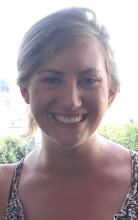For our Australian Culture and Society class, we have broken up into four modules- each of which covers a different subject area. I'm in Aboriginal Australians, and today we had our first class.
First of all, it's important to know that since the First Fleet of European settlers arrived in Australia in 1788, there has been a rift between the colonizers and the Aboriginal people. After devastating losses in the earlier phases of European presence, Aboriginals were able to rebuild their population in the late 19th and early 20th century. Now they are actually greater in number than ever before.
Despite all this, there is still some heavy conflict between the two peoples. Today we learned a lot about the lifestyle and mindset of Aboriginal Australians from an amazing professor. She is half Wiradjuri and half Scot, and is extremely knowledgeable on the subject of Aboriginal people. The Wiradjuri people originated about 250 miles West of Sydney in Victoria.
I walked away from class today with two major points ringing in my ears. We began class by sitting in a circle on the floor, looking at a map of Australia. The map was not divided into the six major areas it is today. Instead, it was divided into hundreds of territories- each of which represented a different group of Aboriginal peoples at the time of European settlement in Australia. The most interesting thing: there were no hard borders around the territories. Rather, the colors representing distinct groups faded into one another, forming blurred lines. Our professor, Jennifer, said that though each territory was predominantly inhabited by one group of Aboriginals, they shared their lands with surrounding tribes. "Borders" were formed by natural land features, such as rivers, valleys, etc. Neighboring tribes could simply drop in for an extended visit, or they could seek help after a natural disaster if needed. The bottom line was, the Aboriginal people were not opposed to sharing their lands in ANY way. This may seem contradictory to what many of you have learned, because many history books (according to Jennifer), present the Aboriginals as territorial people. This is primarily a tactic used to save European face.
After the first in-class lesson, we took a tour around Victoria Park. It was a complete surprise to me to learn that the park is actually highly representative of what Sydney looked like before the Europeans colonized. The topography of the land has been very well preserved, because the colonizers did not bring materials with them that could handle major landscaping jobs. This, and the fact that the bulldozer hadn't yet been invented, caused them to have to develop their city according to the land's structure as it was. We stood on the top level of a car park (parking lot) at the end of the tour to see the lay of the land better. When you're looking for it, it's very easy to see that the city's structure is completely based on natural landscaping. Very interesting stuff.
I could go on for hours about how much more we learned (including how to freshen your breath using peppermint gum leaves and how to clear your sinuses with Eucalyptus leaves), but I am going to save the remainder of my energy for an economics paper I have to write. Thursday and Friday will be busy with homework, so my next post will be a while from now. Hope all is well in the States, and that everyone is learning as much as I am! Lots of love to friends and family!
Wednesday, February 3, 2010
Subscribe to:
Post Comments (Atom)


Haley: Fascinating. You make us want to go back to school. Love, M&D
ReplyDelete